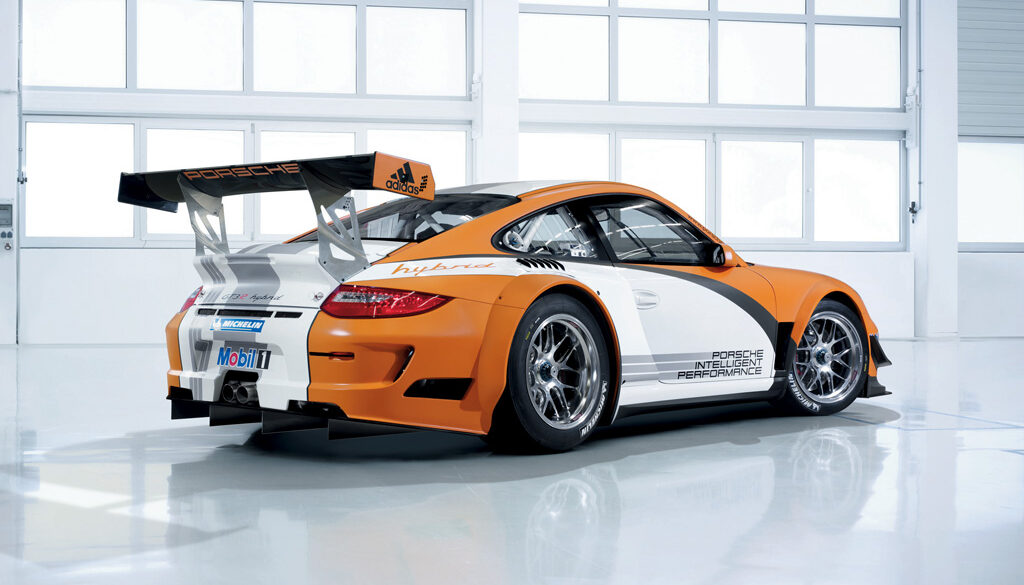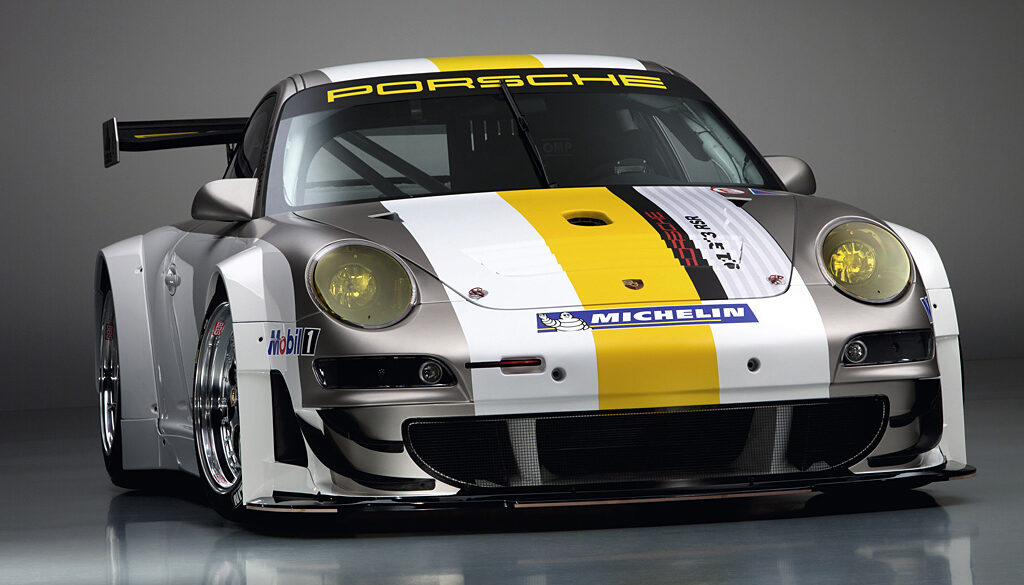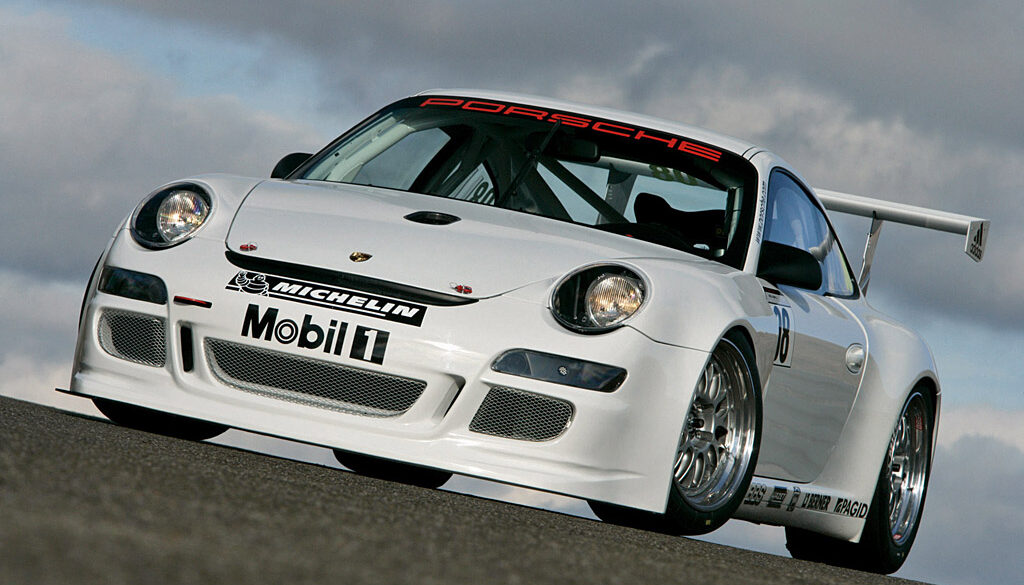The Porsche 997 GT3 R Hybrid 2.0 is an update to the 997 GT3 R Hybrid. Compared to its predecessor, which debuted in 2010, the 2011 second-generation hybrid is 20 percent lighter and more efficient without any concession to lap times. While sharing the same paint scheme, the new vehicle is easily identified by its lack of intakes in front of each rear wheel - changes to engine cooling allowed the slats to be dropped and aerodynamic efficiency improved. It gets a traditional race-bred flat six engine. The GT3 R Hybrid has a completely independent second driveline in the front of the chassis, a clever and complex hybrid electric set up that rockets it from standstill to 60 mph in just 2.5 seconds.
During the Geneva Motor Show, a Porsche 911 GT3 R with innovative hybrid drive is making its debut. The innovative hybrid technology featured in the car has been developed especially for racing, standing out significantly in its configuration and components from conventional hybrid systems. In this case, electrical front axle drive with two electric motors developing 60 kW each supplements the 480-bhp four-litre flat-six at the rear of the 911 GT3 R Hybrid. Instead of batteries, an electrical flywheel power generator delivers energy to the electric motors.
Following the Porsche 911 GT3 Cup, Porsche AG, Stuttgart, is entering yet another racing car in the 2010 motorsport season: The 911 GT3 R will be raced in series based on the international FIA GT3 regulations, thus succeeding the 911 GT3 Cup S. The main focus in developing this new model was on even better drivability and even easier handling. The 911 GT3 R is powered by a four-litre six-cylinder boxer engine delivering maximum output of 480 bhp (353 kW) transmitted to the rear axle by a sequential six-speed dog gearbox.
To a large extent, the 3.6-litre boxer engine is identical to the power unit used in the Porsche Mobil1 Supercup and the international Carrera Cup championships. Power output has increased by 20 horsepower to now 440 hp (324 kW) at 8,000 rpm. Maximum torque is up by ten Nm to 430 at 7,250 revs per minute. The power increase results from optimised engine electronics and a modified exhaust system. In contrast to the GT3 Cup, the body of the Cup S is not based on the road-going GT3 but on the GT3 RS.
Porsche has announced the introduction of the new 2007 911 GT3 RSR (type 997) for the American Le Mans Series and other world GT racing venues. The latest version of the most successful racing sports car in history is based on the street production model 911 GT3 RS (model year 2007) and was launched in late 2006. The 911 GT3 RSR has wider rear fenders and rear track to improve performance capabilities over its predecessor. The car has also been developed to fit into the 1,225 kg class. The new car is built in accordance with the ACO LMGT2 Regulations and the FIA Article 257.
The Porsche 997 GT3 Cup was a series of race cars created by Porsche to enter the Fédération Internationale de l’Automobile (FIA) Group GT3 racing class. Replacing the 996 GT3 Cup, the 997 Cup's 3.6 litre engine is rated at 294 kW (400 PS; 394 hp) and was mated to a six-speed sequential transmission. In 2009, the GT3 Cup received several 997.2 updates including a new 3.8 litre engine with an output of 331 kW (450 PS; 444 hp).








